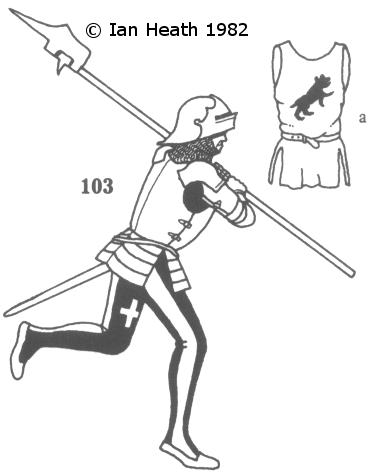 |
Create an Amazon Business Account Find the perfect fit with Amazon Prime. Try Before You Buy. |
SWISS HALBERDIER, 15th CENTURY
An extract from Armies of the Middle Ages, volume 1by Ian Heath
[Based on Diebold Schilling the Younger's 'Lucerne Chronicle' depicting the Battle of Grandson. (according to note 107)]
